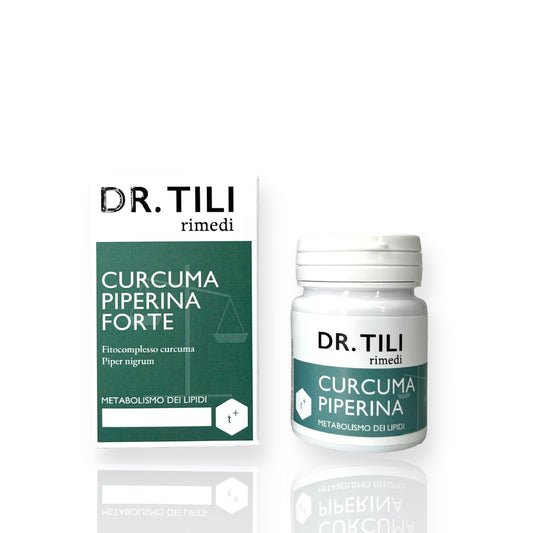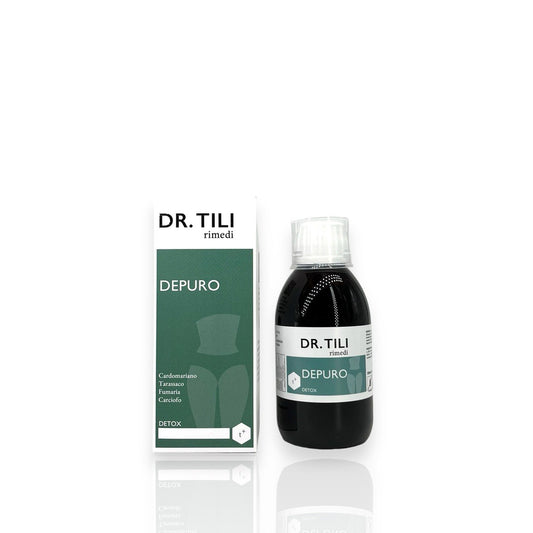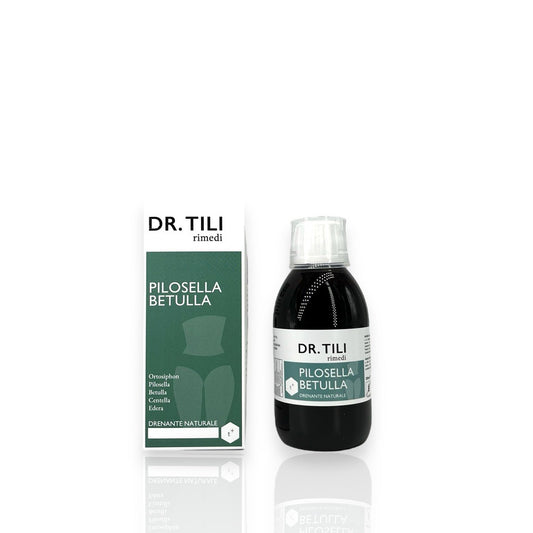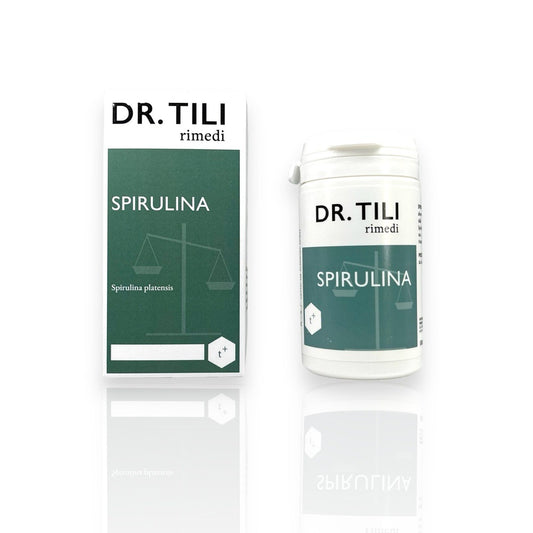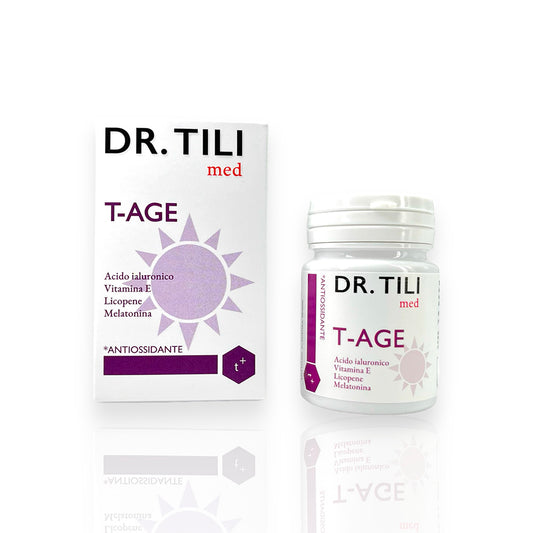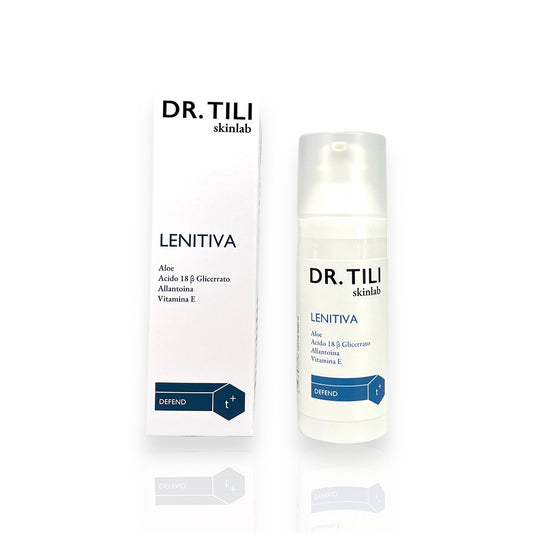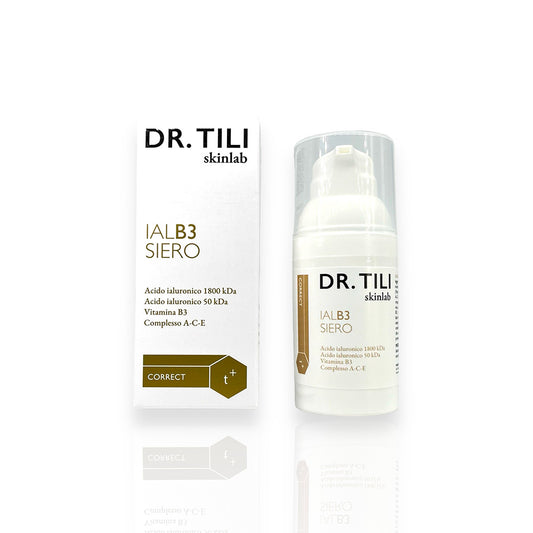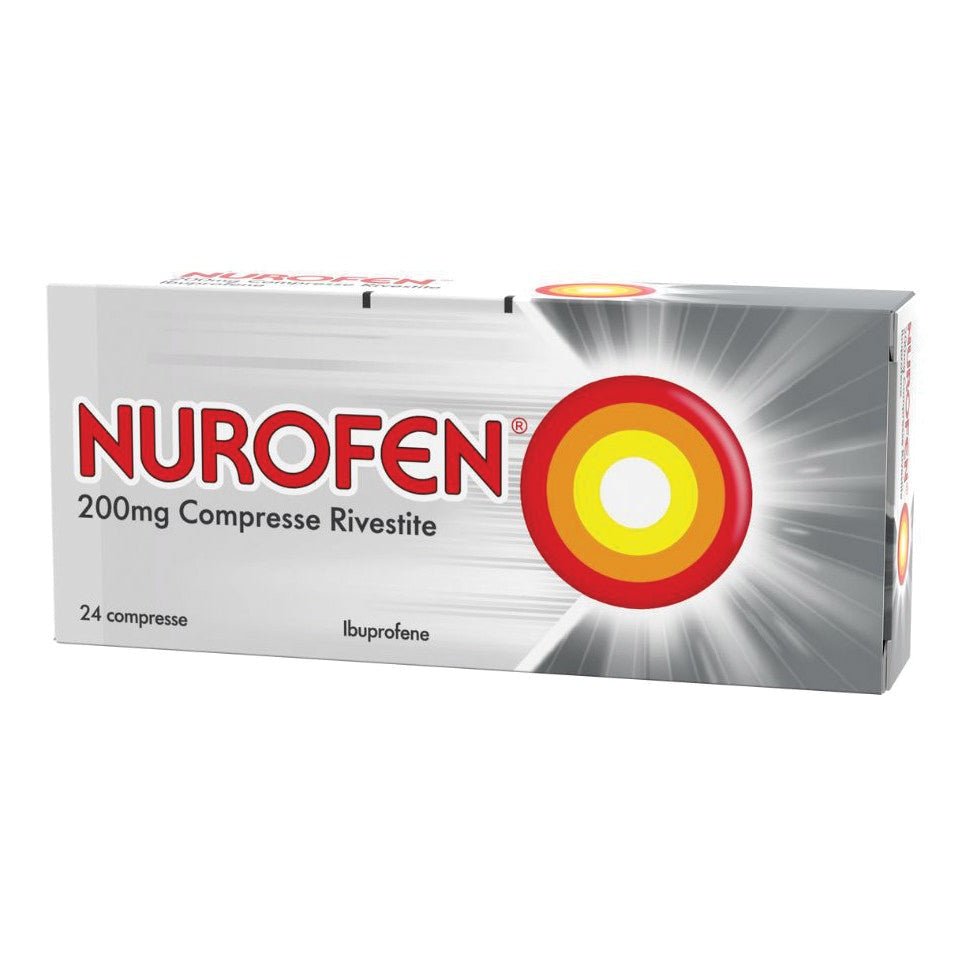RECKITT BENCKISER H.(IT.) SpA
Nurofen 200mg 24 coated tablets
Nurofen 200mg 24 coated tablets

Pickup available at Farmacia Tili
Usually ready in 24 hours
PRODUCT NET WEIGHT
PRODUCT NET WEIGHT
EAN
EAN
025634041
MINSAN
MINSAN
025634041
Nurofen 200mg 24 coated tablets is a medicine based on ibuprofen , an active ingredient belonging to the class of nonsteroidal anti-inflammatory drugs (NSAIDs) . Each tablet contains 200 mg of ibuprofen, formulated to offer effective relief from various types of pain such as headache, toothache, neuralgia, muscle and joint pain, as well as menstrual pain. It is also an adjuvant in the symptomatic treatment of feverish and flu states. Indicated for adults and adolescents over 12 years of age, Nurofen 200mg is designed for rapid and targeted action, thanks to its coated formulation that facilitates intake and absorption.
ACTIVE INGREDIENTS
Active ingredients in Nurofen 200mg 24 coated tablets - What is the active ingredient in Nurofen 200mg 24 coated tablets?
Coated tablets 200 mg: Each tablet contains 200 mg ibuprofen Coated tablets 400 mg: Each tablet contains 400 mg ibuprofen Excipients with known effect: Each 200 mg coated tablet contains: - 116.1 mg sucrose, equivalent to approximately 0.34 mmol - 17.34 mg sodium, equivalent to approximately 0.75 mmol Each 400 mg coated tablet contains: - 232.2 mg, equivalent to approximately 0.68 mmol - 34.69 mg sodium, equivalent to approximately 1.51 mmol. For the full list of excipients, see section 6.1.
EXCIPIENTS
Composition of Nurofen 200mg 24 coated tablets - What does Nurofen 200mg 24 coated tablets contain?
Nurofen 200 mg coated tablets Croscarmellose sodium, sodium laurilsulfate, sodium citrate, stearic acid, colloidal anhydrous silica, carmellose sodium , talc, dried spray-dried gum arabic, sucrose , titanium dioxide, macrogol 6000, ink (shellac, black iron oxide E172, propylene glycol E1520). Nurofen 400 mg coated tablets Croscarmellose sodium , sodium laurilsulfate, sodium citrate, stearic acid, colloidal anhydrous silica, carmellose sodium , talc, dried spray-dried gum arabic, sucrose , titanium dioxide, macrogol 6000, ink (shellac, red iron oxide (E 172), propylene glycol (E1520), ammonium hydroxide (E527), simethicone).
DIRECTIONS
Therapeutic indications Nurofen 200mg 24 coated tablets - Why is Nurofen 200mg 24 coated tablets used? What is it used for?
Various types of pain: headache, toothache, neuralgia, muscle and joint pain, menstrual pain. Adjuvant in the symptomatic treatment of fever and flu. Nurofen is indicated in adults and adolescents over 12 years of age
CONTRAINDICATIONS SIDE EFFECTS
Contraindications Nurofen 200mg 24 coated tablets - When should Nurofen 200mg 24 coated tablets not be used?
Hypersensitivity to the active substance or to any of the excipients listed in section 6.1. Patients who have previously shown hypersensitivity reactions (e.g. bronchospasm, asthma, rhinitis, angioedema or urticaria) following the use of ibuprofen, acetylsalicylic acid or other nonsteroidal anti-inflammatory drugs (NSAIDs). Patients with severe hepatic or renal insufficiency (see section 4.4). Severe heart failure (NYHA class IV). Patients with a history of gastrointestinal bleeding or perforation, related to previous NSAID therapy. Patients with active or previous recurrent peptic ulcers/haemorrhages (two or more distinct episodes of proven ulceration or bleeding). During the last trimester of pregnancy (see section 4.6). Children under 12 years. Before or after cardiac surgery.
DOSAGE
Quantity and method of taking Nurofen 200mg 24 coated tablets - How to take Nurofen 200mg 24 coated tablets?
Dosage For short term treatment only. Undesirable effects may be minimised by using the lowest effective dose for the shortest duration necessary to control symptoms (see section 4.4). If symptoms persist or worsen after a short period of treatment, consult your doctor. If use of the medicinal product is necessary for more than 3 days in adolescents, or if symptoms worsen, your doctor should be consulted. NUROFEN 200 mg coated tablets Paediatric population: Do not administer to children under 12 years of age. Adults and adolescents over 12 years : 1-2 tablets, 2-3 times a day. The interval between doses should not be less than 4 hours. Do not exceed a dose of 1200 mg (6 tablets) in 24 hours. Elderly : no change in dosage regimen is required. NUROFEN 400 mg coated tablets Paediatric population: Do not administer to children under 12 years of age. Adults and adolescents over 12 years of age One tablet 2-3 times a day. The interval between doses should not be less than 4 hours. Do not exceed a dose of 1200 mg (3 tablets) in 24 hours. Elderly: no changes to the dosage regimen are required. Method of administration Oral use Patients with gastric sensitivity problems are advised to take Nurofen with food.
CONSERVATION
Storage Nurofen 200mg 24 coated tablets - How to store Nurofen 200mg 24 coated tablets?
Nurofen 400 mg coated tablets: store at a temperature not exceeding 30°C.
WARNINGS
Warnings Nurofen 200mg 24 coated tablets - About Nurofen 200mg 24 coated tablets it is important to know that:
Caution is advised in patients with coagulation defects. Undesirable effects may be minimised by using the lowest effective dose for the shortest duration necessary to control symptoms (see gastrointestinal and cardiovascular risks below). Elderly : Elderly patients have an increased frequency of adverse reactions to NSAIDs, especially gastrointestinal bleeding and perforation, which may be fatal (see section 4.2). Paediatric population : There is a risk of impaired renal function in dehydrated adolescents. Respiratory disorders : Bronchospasm may occur in patients with bronchial asthma or allergic disease or a history of allergic disease. Other NSAIDs : The use of Nurofen with other NSAIDs, including cyclooxygenase-2 selective inhibitors, should be avoided. (see section 4.5) SLE and mixed connective tissue disease Systemic lupus erythematosus and mixed connective tissue disease due to increased risk of aseptic meningitis (see section 4.8); Cardiovascular and cerebrovascular effects : Caution is advised (discuss with your doctor or pharmacist) before initiating treatment in patients with a history of hypertension and/or heart failure since fluid retention, hypertension and oedema have been reported in association with NSAID therapy. Clinical trials suggest that use of ibuprofen, particularly at high doses (2400 mg/day), may be associated with a small increased risk of arterial thrombotic events (for example myocardial infarction or stroke). Overall, epidemiological studies do not suggest that low doses of ibuprofen (e.g. ≤ 1200 mg/day) are associated with an increased risk of arterial thrombotic events. Patients with uncontrolled hypertension, congestive heart failure (NYHA II-III), established ischaemic heart disease, peripheral arterial disease and/or cerebrovascular disease should be treated with ibuprofen only after careful consideration and high doses (2400 mg/day) should be avoided. Careful consideration should also be exercised before initiating long-term treatment of patients with risk factors for cardiovascular events (e.g. hypertension, hyperlipidaemia, diabetes mellitus, smoking), particularly if high doses (2400 mg/day) of ibuprofen are required. Hepatic or renal function: • renal insufficiency, as renal function may be impaired (see sections 4.3 and 4.8). In general, habitual use of analgesics, especially combinations of several analgesic active ingredients, may lead to permanent renal damage with risk of onset of renal failure (analgesic nephropathy). • hepatic dysfunction (see sections 4.3 and 4.8). Particular caution should be exercised in treating patients with impaired hepatic or renal function. Periodic monitoring of clinical and laboratory parameters is advisable in such patients, especially in case of prolonged treatment. Impaired female fertility : Nurofen should be avoided in women planning pregnancy (see section 4.6). Gastrointestinal safety : NSAIDs should be administered with caution to patients with a history of gastrointestinal disease (ulcerative colitis, Crohn's disease) as these conditions may be exacerbated (see section 4.8). Gastrointestinal bleeding, ulceration and perforation, which can be fatal, have been reported with all NSAIDs at anytime during treatment, with or without warning symptoms or a previous history of serious gastrointestinal events. The risk of GI bleeding, ulceration or perforation is higher with increasing NSAID doses, in the elderly and in patients with a history of ulcer, particularly if complicated with haemorrhage or perforation (see section 4.3). These patients should start treatment on the lowest dose available. Concomitant use of protective agents (e.g. misoprostol or proton pump inhibitors) should be considered for these patients, and also for patients requiring concomitant low dose acetylsalicylic acid or other drugs likely to increase gastrointestinal risk (see section 4.5). Patients with a history of GI toxicity, particularly when elderly, should report any unusual GI symptoms (especially GI bleeding) particularly in the initial stages of treatment. Caution should be advised in patients receiving concomitant medications which could increase the risk of ulceration or bleeding, such as oral corticosteroids, anticoagulants such as warfarin, selective serotonin reuptake inhibitors or anti-platelet agents such as acetylsalicylic acid (see section 4.5). When gastrointestinal bleeding or ulceration occurs in patients receiving Nurofen, the treatment should be withdrawn. Severe skin reactions: Serious skin reactions, some of them fatal, including exfoliative dermatitis, Stevens-Johnson syndrome and toxic epidermal necrolysis, have been reported rarely in association with the use of NSAIDs (see section 4.8). Patients appear to be at highest risk early in the course of therapy: the onset of the reaction occurring in the majority of cases within the first month of treatment. Acute generalised exanthematous pustulosis (AGEP) has been reported in association with medicinal products containing ibuprofen. Ibuprofen should be discontinued at the first appearance of signs and symptoms of severe skin reactions, such as rash, mucosal lesions or any other sign of hypersensitivity. Masking of symptoms of underlying infections : Nurofen may mask the symptoms of infection, which may delay initiating adequate treatment and therefore worsen the outcome of the infection. This has been observed in community-acquired bacterial pneumonia and bacterial complications of chickenpox. When Nurofen is administered for the relief of fever or pain related to infection, monitoring of the infection is advised. In non-hospital settings, the patient should seek medical advice if symptoms persist or worsen. Other: Headache may occur during prolonged treatment with analgesic medicinal products at doses higher than those indicated and should not be treated with higher doses of the product. Alcohol consumption should be avoided as it may intensify the side effects of NSAIDs, especially those affecting the gastrointestinal tract or the central nervous system. At the first signs of hypersensitivity reaction after administration of ibuprofen, treatment should be stopped. Medically assisted measures should be initiated by specialized medical personnel, in line with the symptoms. Ibuprofen acid may cause a prolongation of bleeding time by reversibly inhibiting platelet aggregation. Important information about some of the excipients Nurofen contains sucrose: patients with rare hereditary problems of fructose intolerance, glucose-galactose malabsorption, or sucrase-isomaltase insufficiency should not take this medicine. Nurofen 200 mg film-coated tablets contain sodium: This medicine contains less than 1 mmol sodium (23 mg) per tablet (17.34 mg), that is to say essentially 'sodium-free' and slightly more than 1 mmol sodium (23 mg) per 2 tablets (34.68 mg), equivalent to 1.73% of the WHO recommended maximum daily intake of 2 g sodium for an adult. Nurofen 400 mg film-coated tablets contain sodium : This medicine contains 34.69 mg sodium per tablet, equivalent to 1.73% of the WHO recommended maximum daily intake of 2 g sodium for an adult.
INTERACTIONS
Interactions Nurofen 200mg 24 coated tablets - Which medicines or foods can modify the effect of Nurofen 200mg 24 coated tablets?
Ibuprofen should be avoided in combination with: - Acetylsalicylic acid: Concomitant administration of ibuprofen and acetylsalicylic acid is generally not recommended due to the potential for increased adverse effects (see section 4.4). Experimental data suggest that ibuprofen may competitively inhibit the effect of low dose acetylsalicylic acid on platelet aggregation when the two drugs are administered concomitantly. Although there are uncertainties regarding the extrapolation of these data to the clinical situation, the possibility that regular, long-term use of ibuprofen may reduce the cardioprotective effect of low dose acetylsalicylic acid cannot be excluded. No clinically relevant effect is considered likely following occasional use of ibuprofen (see section 5.1). - Other NSAIDs including cyclooxygenase-2 selective inhibitors: Concomitant use of two or more NSAIDs should be avoided as they may increase the risk of gastrointestinal adverse reactions (see section 4.4). Ibuprofen (like other NSAIDs) should be used with caution in combination with: - Corticosteroids: increased risk of gastrointestinal ulceration or bleeding (see section 4.4) - Anticoagulants: NSAIDs may enhance the effects of anticoagulants, such as warfarin (see section 4.4) - Antiplatelet agents and selective serotonin reuptake inhibitors (SSRIs): increased risk of gastrointestinal bleeding (see section 4.4). - Antihypertensives (ACE inhibitors and Angiotensin II antagonists), diuretics and beta-blockers: NSAIDs may reduce the effect of diuretics and other antihypertensive drugs. In some patients with compromised renal function (e.g. dehydrated patients or elderly patients with compromised renal function) the co-administration of an ACE inhibitor or an angiotensin II antagonist and agents that inhibit the cyclo-oxygenase system may lead to further deterioration of renal function, including possible acute renal failure, which is usually reversible. These interactions should be considered in patients taking a coxib (such as Nurofen) concomitantly with ACE inhibitors or angiotensin II antagonists. Therefore, the combination should be administered with caution, especially in elderly patients. Patients should be adequately hydrated and consideration should be given to monitoring renal function after initiation of concomitant therapy and at regular intervals thereafter. Diuretics may increase the risk of nephrotoxicity of NSAIDs. - Cardiac glycosides: NSAIDs may worsen heart failure, reduce GFR (glomerular filtration rate) and increase plasma glycoside levels. - Lithium. There is evidence of the possibility of a potential increase in blood lithium levels, with the possibility of reaching the toxic threshold. If this combination is necessary, monitor the blood lithium levels in order to adapt the lithium dosage during concomitant treatment with ibuprofen. - Methotrexate. There is evidence of the possibility of an increase in plasma levels of methotrexate. - Ciclosporins: increase the risk of nephrotoxicity. - Mifepristone: NSAIDs should not be taken for 8-12 days after administration of Mifepristone as NSAIDs may reduce the effects of Mifepristone. - Tacrolimus: possible increased risk of nephrotoxicity when NSAIDs are administered with Tacrolimus. - Zidovudine: increased risk of haematological toxicity when NSAIDs are administered with Zidovudine. There is evidence of an increased risk of haemarthrosis and haematoma in HIV-seropositive haemophilic patients treated concomitantly with zidovudine and ibuprofen. - Quinolone antibiotics: Data from animal studies indicate that NSAIDs may increase the risk of convulsions associated with quinolone antibiotics. Patients taking NSAIDs and quinolones may have an increased risk of developing convulsions. - Alcohol, bisphosphonates and pentoxifylline: may enhance gastrointestinal side effects and the risk of bleeding and ulceration. - Baclofen: high toxicity of baclofen.
SIDE EFFECTS
Like all medicines, Nurofen 200mg 24 coated tablets can cause side effects - What are the side effects of Nurofen 200mg 24 coated tablets?
The following list of undesirable effects includes undesirable effects that have been observed during treatment with ibuprofen at self-medication doses (up to a maximum of 1200 mg per day). In case of chronic conditions during long-term treatment, additional undesirable effects may occur. The undesirable effects associated with the administration of ibuprofen are listed below according to system organ class and frequency. The following expressions are used for the frequency of occurrence of undesirable effects: Very common ( ≥ 1/10) ; Common ( ≥ 1/100, <1/10) ; Uncommon ( ≥ 1/1000, <1/100) ; Rare ( ≥ 1/10,000, <1/1000) ; Very rare (<1/10,000) ; Not known (frequency cannot be estimated from the available data) . Within each frequency grouping, undesirable effects are presented in order of decreasing seriousness.
| Classification by systems and organs | Frequency | Adverse Reaction |
| Pathologies of the haemolymphopoietic system | Very rare | Hematopoietic disorders¹ |
| Immune system disorders | Uncommon | Hypersensitivity reactions including urticaria and pruritus² |
| Very rare | Severe hypersensitivity reactions including swelling of the face, tongue and throat, dyspnoea, tachycardia, hypotension (anaphylaxis, angioedema or severe shock)² | |
| Nervous system disorders | Uncommon | Headache, dizziness |
| Rare | Stroke 9 | |
| Very rare | Aseptic meningitis³ | |
| Eye pathologies | Very rare | Visual disturbances |
| Heart disease | Very rare | Heart failure and edema 4 |
| Vascular pathologies | Very rare | Hypertension 4 |
| Respiratory, thoracic and mediastinal pathologies | Not known | Respiratory tract reactivity including asthma, worsening of asthma, bronchospasm or dyspnea |
| Gastrointestinal disorders | Uncommon | Dyspepsia, abdominal pain and nausea 5 |
| Rare | Diarrhea, flatulence, constipation and vomiting | |
| Very rare | Peptic ulcers, gastrointestinal perforation or hemorrhage, melena, hematemesis 6 , ulcerative stomatitis, gastritis | |
| Not known | Exacerbation of colitis and Crohn's disease 7 , pancreatitis | |
| Hepatobiliary pathologies | Rare | Hepatotoxicity |
| Very rare | Liver disorders, especially following long-term treatment, hepatitis, jaundice | |
| Skin and subcutaneous tissue disorders | Uncommon | Skin rashes². |
| Very rare | Erythema multiforme, bullous reactions including Stevens-Johnson syndrome and toxic epidermal necrolysis.² | |
| Not known | Drug reaction with eosinophilia and systemic symptoms (DRESS syndrome), acute generalized exanthematous pustulosis (AGEP), photosensitivity reactions | |
| Kidney and urinary disorders | Very rare | Acute renal failure 8 , hematuria, nephritis, nephrotic syndrome 9 |
| Diagnostic tests | Rare | Increased transaminases, increased alkaline phosphatase, decreased haematocrit, prolonged bleeding time, decreased blood calcium, increased uric acid |
| Very rare | Decrease in the level of hemoglobin in the blood |
Description of some adverse reactions 1 Examples include anaemia, leucopenia, thrombocytopenia, pancytopenia, agranulocytosis). Early manifestations are: fever, sore throat, superficial ulcers of the oral cavity, flu-like symptoms, severe fatigue, unexplained bruising and bleeding. ² Hypersensitivity reactions: These reactions may include a) non-specific allergic reactions and anaphylaxis, b) respiratory tract reactivity including asthma, worsening of asthma, bronchospasm or dyspnoea or c) various skin conditions such as various rashes, pruritus, urticaria, purpura, angioedema and very rarely bullous and exfoliative dermatitis including toxic epidermal necrolysis, Stevens-Johnson syndrome and erythema multiforme. ³ The pathogenesis of drug-induced aseptic meningitis is not fully understood. However, available data on aseptic meningitis related to NSAID administration suggest an immune hypersensitivity reaction (due to a temporary relationship with the drug intake and the disappearance of symptoms after discontinuation of treatment). Of note, single cases of aseptic meningitis symptoms (such as stiff neck, headache, nausea, vomiting, fever and disorientation) have been observed during treatment with ibuprofen in patients with autoimmune disorders (such as systemic lupus erythematosus, mixed connective tissue disease). 4 Clinical trials suggest that use of ibuprofen, particularly at high doses (2400 mg/day) may be associated with a modest increased risk of arterial thrombotic events (for example myocardial infarction or stroke) (see section 4.4). 5 The most commonly observed adverse reactions are gastrointestinal in nature. 6 sometimes fatal, particularly in the elderly 7 see section 4.4 8 particularly following long-term treatment, associated with increased serum urea concentrations. Decreased urea excretion and oedema. Also includes papillary necrosis 9 reported as an effect of the NSAID class Reporting of suspected adverse reactions Reporting suspected adverse reactions that occur after authorisation of the medicinal product is important. It allows continued monitoring of the benefit/risk balance of the medicinal product. Healthcare professionals are asked to report any suspected adverse reactions via the national reporting system at: https://www.aifa.gov.it/content/segnalazioni-reazioniavverse.
OVERDOSE
Nurofen 200mg 24 coated tablets Overdose - What are the risks of Nurofen 200mg 24 coated tablets in case of overdose?
Toxicity Signs and symptoms of toxicity have not generally been observed at doses below 100 mg/kg in children or adults. However, in some cases supportive treatment may be necessary. Children have been observed to exhibit signs and symptoms of toxicity after ingestion of ibuprofen at doses of 400 mg/kg or greater. Symptoms Most patients who have ingested significant amounts of ibuprofen will exhibit symptoms within 4 to 6 hours. The most commonly reported symptoms of overdose include nausea, vomiting, abdominal pain, lethargy and drowsiness. Central nervous system (CNS) effects include headache, tinnitus, dizziness, convulsions and loss of consciousness. Nystagmus, metabolic acidosis, hypothermia, renal effects, gastrointestinal bleeding, coma, apnoea, diarrhoea and CNS and respiratory depression, blurred vision have also been reported rarely. Disorientation, excitement, fainting and cardiovascular toxicity including hypotension, bradycardia and tachycardia have been reported. Renal failure and liver damage are possible in cases of significant overdose. In cases of severe poisoning, metabolic acidosis and prolongation of prothrombin time/INR may occur, probably due to interference with the action of circulating clotting factors. Exacerbation of asthma may occur in asthmatics. Treatment There is no specific antidote for ibuprofen overdose. Symptomatic and supportive treatment is indicated in the event of overdose and should include maintaining a patent airway and monitoring cardiac function and vital signs until the patient is stabilized. Particular attention should be paid to monitoring blood pressure, acid-base balance and any gastrointestinal bleeding. Administration of activated charcoal should be considered within one hour of ingestion of a potentially toxic amount. Alternatively, gastric lavage should be considered within one hour of ingestion of a potentially life-threatening overdose in adults. Adequate diuresis should be ensured and renal and hepatic function should be closely monitored. The patient should be observed for at least four hours following ingestion of a potentially toxic amount of the drug. Frequent or prolonged convulsions should be treated with intravenous diazepam. If ibuprofen has already been absorbed, alkaline agents should be administered to promote excretion of the acidic ibuprofen in the urine. Bronchodilators should be administered for asthma. Other supportive measures may be necessary depending on the patient's clinical condition. Contact your local poison control center for more information.
PREGNANCY AND BREASTFEEDING
If you are pregnant or breast-feeding, think you may be pregnant or are planning to have a baby, ask your doctor for advice before taking Nurofen 200mg 24 coated tablets.
Pregnancy Inhibition of prostaglandin synthesis may adversely affect the pregnant woman and/or the embryo/fetal development. Data from epidemiological studies suggest an increased risk of miscarriage, cardiac malformation and gastroschisis after use of a prostaglandin synthesis inhibitor during early pregnancy. The absolute risk of cardiac malformations increased from less than 1%, up to approximately 1.5%. The risk is believed to increase with dose and duration of therapy. In animals, administration of prostaglandin synthesis inhibitors has been shown to result in increased pre- and post-implantation loss and embryo-fetal mortality. In addition, an increased incidence of various malformations, including cardiovascular, has been reported in animals given prostaglandin synthesis inhibitors during the organogenetic period. From the 20th week of pregnancy onwards, the use of ibuprofen may cause oligohydramnios resulting from fetal renal dysfunction. This condition may be encountered soon after initiation of treatment and is usually reversible upon discontinuation of treatment. In addition, cases of constriction of the ductus arteriosus have been reported following treatment in the second trimester, most of which resolved after discontinuation of treatment. Therefore, during the first and second trimester of pregnancy, ibuprofen should not be given unless clearly necessary. If ibuprofen is used by a woman planning a pregnancy, or during the first and second trimester of pregnancy, the lowest possible dose should be used for the shortest possible duration. Following exposure to ibuprofen for several days from the 20th week of gestation onwards, antenatal monitoring for oligohydramnios and constriction of the ductus arteriosus should be considered. In case of oligohydramnios or constriction of the ductus arteriosus, treatment with ibuprofen should be discontinued. During the third trimester of pregnancy, all prostaglandin synthesis inhibitors may expose the foetus to: - cardiopulmonary toxicity (premature constriction/closure of the ductus arteriosus and pulmonary hypertension); - renal dysfunction (see above); the mother and the neonate, at the end of pregnancy, to: - possible prolongation of bleeding time, an anti-aggregating effect which may occur even at very low doses; - inhibition of uterine contractions resulting in delayed or prolonged labour. Consequently, Nurofen is contraindicated during the third trimester of pregnancy (see sections 4.3 and 5.3). Breast-feeding Ibuprofen and its metabolites may pass into breast milk in low concentrations. No harmful effects for newborns are known to date, therefore for short-term treatment with the recommended dose for pain and fever, interruption of breast-feeding is not generally necessary. Fertility There is evidence that medicinal products that inhibit cyclooxygenase/prostaglandin synthesis may cause impairment of female fertility by affecting ovulation. This effect is reversible after discontinuation of treatment. Nurofen should be discontinued in women who have fertility problems or who are undergoing investigation of fertility.
DRIVING AND USE OF MACHINERY
Taking Nurofen 200mg 24 coated tablets before driving or using machines - Does Nurofen 200mg 24 coated tablets affect driving or using machines?
For short periods of treatment, Nurofen does not alter or has negligible influence on the ability to drive and use machines.



